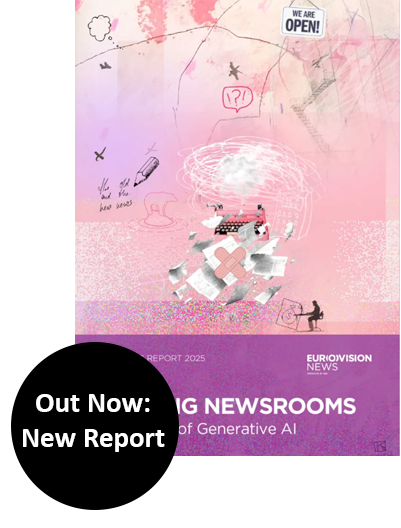Selling journalism is no crime. In fact, only a few reporters and editors are ashamed of the fact that much of what they go great lengths to research, edit, and produce can only be consumed for money. After all, even bread is not for free. However, potential users who are stranded at paywalls at times make journalists feel like sleazy used car dealers. “It’s outrageous to make important information available to paying customers only,” complain those who are turned away at the login. Some even go further and argue, this promotes the division of society. Nikki Usher made this point in her book “News for the Rich, White, and Blue” that was published by Columbia University Press in 2021.
So, feeling attacked like this, who can blame journalists for getting a bit pathetic at times when talking about their craft? They prefer to elaborate about enlightenment and democracy, about holding power to account and citizen service, rather than about user loyalty and business models. The truth is, however, that without rapid progress in the commercialization of their offerings, many publishers will not survive.
This is why the journalism of the future will most likely move into either one of two worlds: On the one hand, there will be the increasingly sophisticated world of commercial journalism, in which highly professional providers offer their distinct audiences custom-fit, high-quality content, and user-friendly products that inspire them. On the other, there will be the world of public service or non-profit journalism, which steps in where the market fails. In this second world, journalism of the watchdog type will be created that only a few people are willing to pay for, or it will be about journalism that serves audiences which cannot or refuse to pay for news. Democracy needs both worlds. So, instead of fuelling today’s fights between public service and commercial media in tightening markets, it is about time for an honest discussion about this division of labour. Journalism would benefit from it – and so would citizens.
The highly professional world is currently emerging at a rapid pace. Most publishers have understood that only the sale of digital subscriptions, or at least memberships and other products, will secure their future. They are increasingly using experiments and meaningful data to figure out which customers or customer groups are most lucrative and how best to serve them. The audiences-first focus is at the core of media innovation programs like Table Stakes, in which close to 150 publishers in the US and Europe have already taken part (disclosure: the author of this is a coach in the Table Stakes Europe program run by WAN-IFRA). A lot of great journalism is created this way. But decisive for gaining and retaining subscribers is individual customers’ time spent on certain media. An extensive German data-gathering project called Drive has revealed that this was the key metric for selling digital subscriptions, not the clout of individual stories or subject areas that “convert well”. This summer, the industry organisation INMA named Drive, that bundles data from more than a dozen regional publishers and is led by German Press Agency dpa, the word’s “best news media innovation project”.
Focusing on “media time” though means that many publishers won’t be able to afford much journalism that doesn’t zero in on lucrative audiences. As resources become scarcer, newsrooms must inevitably ignore target groups that promise little commercial success. They are better off making those even happier who they already serve. This may be an audience with a certain level of education, political lineage or background. News organizations like the New York Times and the Financial Times have long understood this. Despite proclamations to the contrary, it is hardly worth many newsrooms’ while to reflect the diversity of society in its entirety. To the contrary, this can even alienate their core clientele. This is a sad truth and sounds reprehensible for journalism on a mission to safeguard democracy. But media companies with too little focus will sooner or later risk their existence.
This makes the role of public service media or non-profit offerings all the more important. With public service media at least in the traditional European concept, every citizen has to pay the license fee. That’s why the broadcasters have a mandate to reflect society in all its diversity and – this is important – meet all groups at eye-level. Unlike commercial publishers, they must remain impartial and use all formats necessary to reach users. Public service media has an obligation to go where the market of journalism fails. However, this also means that they have to make offerings for the mass market in order to not disappear into insignificance. When some commercial publishers argue public service broadcasters should retreat into niches, they don’t understand market dynamics. Such fear of competition always demonstrates a lack of confidence in their own offerings. To defy international platform or streaming monopolies, public service providers must cover the breadth. The commercial ones, on the other hand, should provide their audiences with so much added value that these are happy to pay for it. Ideally, both sides should cooperate on new technologies, innovative services, or education, rather than antagonize each other.
Complementary to public service news, there will also be a niche for non-profit news organisations, particularly in markets without strong public service media like the U.S.. They will establish themselves in areas where the market fails. The Texas Tribune, one of the most prominent non-profit U.S. media companies, for example, has focused on local political coverage. Readers typically don’t like to pay for that, their founder Evan Smith has argued. But when no one holds local politicians and administrators to account, it has been proven to hurt communities and their citizens. This is where funders who want to do good for society will be needed.
An open debate about the different journalism worlds would also enliven the discussion about trust in media. The Reuters Institute for the Study of Journalism in Oxford recently published a study based on discussion forums with media executives from the U.S., the U.K., Brazil and India. What emerged was that newsrooms target their trust-building efforts at very different audiences. For some, it’s about breadth. The aim is to win back those who have turned their backs on the public debate – an endeavour that is honourable, arduous and important, yet rarely successful commercially. For the rest, it’s about stable customer relationships and thus depth. Nevertheless, building trust as a means to an end is not reprehensible, on the contrary. It safeguards the plurality of the media landscape and consequently democracy.
This text was first published in a slightly different version in German by Medieninsider on 8th December 2021.




The British public can’t get enough news about Brexit – at least, that’s what news platforms’ data analytics say. But, according to the Reuters Institute’s latest Digital News Report, 71% of the British public tries to avoid media coverage of the United Kingdom’s impending departure from the European Union. This disparity, which can be seen in a wide range of areas, raises serious questions about news organizations’ increasingly data-driven approach to reporting.
The rise of data analytics has made journalists and their editors confident that they know what people want. And for good reason: with a large share of news consumed on the Internet, media platforms know exactly which stories readers open, how much they read before getting bored, what they share with their friends, and the type of content that entices them to sign up for a subscription.
Such data indicate, for example, that audiences are interested in extraordinary investigative journalism, diet and personal-finance advice, and essays about relationships and family. They prefer stories with a personal angle – say, detailing an affected individual’s fate – rather than reports on ongoing conflicts in the Middle East or city hall coverage. And they are drawn to sensational stories – such as about US President Donald Trump’s scandals and antics – under “clickbait” headlines.
But if newsrooms were really giving audiences what they wanted, it seems unlikely that almost one-third (32%) of respondents in the Digital News Report, the world’s largest ongoing survey of online news consumption, would report that they regularly avoid news altogether. But they did, and that figure is up three percentage points from two years ago.
The most common explanation for avoiding the news media, given by 58% of those who do, is that following it has a negative effect on their mood. Many respondents also cited a sense of powerlessness.
Moreover, only 16% of participants approve of the tone used in news coverage, while 39% disapprove. Young people, in particular, seem fed up with the negativity bias that has long been regarded as a sure-fire way to attract audiences. For many, that bias feels disempowering. Conversations indicate that the problem is compounded for young parents, who want to believe that the world will be good to their children. Younger generations also feel consuming news should be more entertaining and less of a chore.
One reason for the disconnect between the data and people’s self-reported relationship with the news media may be the “guilty pleasure” effect: people have an appetite for voyeurism, but would prefer not to admit it, sometimes even to themselves. So, even as they click on articles about grisly crimes or celebrity divorces, they may say that they want more “quality news.”
When newsrooms indulge readers’ worst impulses, the consequences are far-reaching. Media are integral to support accountability by anyone wielding power or influence, and to mobilize civic engagement. Democracies, in particular, depend on voters being well informed about pressing issues. News organizations thus have a responsibility to report on serious topics, from political corruption to climate change, even if they are unpleasant.
That does not mean that readers’ complaints about media’s negativity bias should be disregarded. On the contrary, if people are to be motivated to confront challenges that are shaping their lives, they should not be made to feel powerless.
This is where so-called solutions journalism comes in. By balancing information about what needs changing with true stories about positive change, news organizations can fulfill their responsibility both to inform and to spur progress. This means occasionally recognizing that over the long term, living standards have improved globally.
Reconnecting with audiences will also require media organizations to broaden their perspectives. In much of the West, it is largely white, male, middle-class journalists who decide what to cover and how. This limits news media’s ability to represent diverse societies fairly and accurately.
In fact, only 29% of Digital News Report respondents agreed that the topics the news media choose “feel relevant” to them. A joint study by the Reuters Institute and the Johannes Gutenberg University in Mainz, Germany, indicates that the key to increasing this share is to increase diversity in newsrooms.
At the same time, news media need to do a better job of contextualizing and otherwise explaining the news. While 62% of Digital News Report respondents feel that media keep them apprised of events, only half believe news outlets are doing enough to help them understand what is happening. At a time when nearly one-third of people think that there is simply too much news being reported, the solution seems clear: do less, better.
This means listening to readers, not just studying the data analytics. It means balancing good news with bad news, and offering clarifying information when needed. It also means representing diverse perspectives. Media organizations that do not make these changes will continue to lose trust and relevance. That is hardly a sound strategy for convincing consumers that their work is worth paying for.